Themes
Heart Simulator 〉
Prediction of therapeutic effect for cardiac resynchronization therapy 〉
Decision of surgical procedure and prognosis prediction for congenital heart disease 〉
Cardiac screening leading to early detection of heart disease 〉
Service Offering Model 〉
Heart Simulator
Heart Simulator
There are some R & D projects in progress to provide various services utilizing the heart simulator.
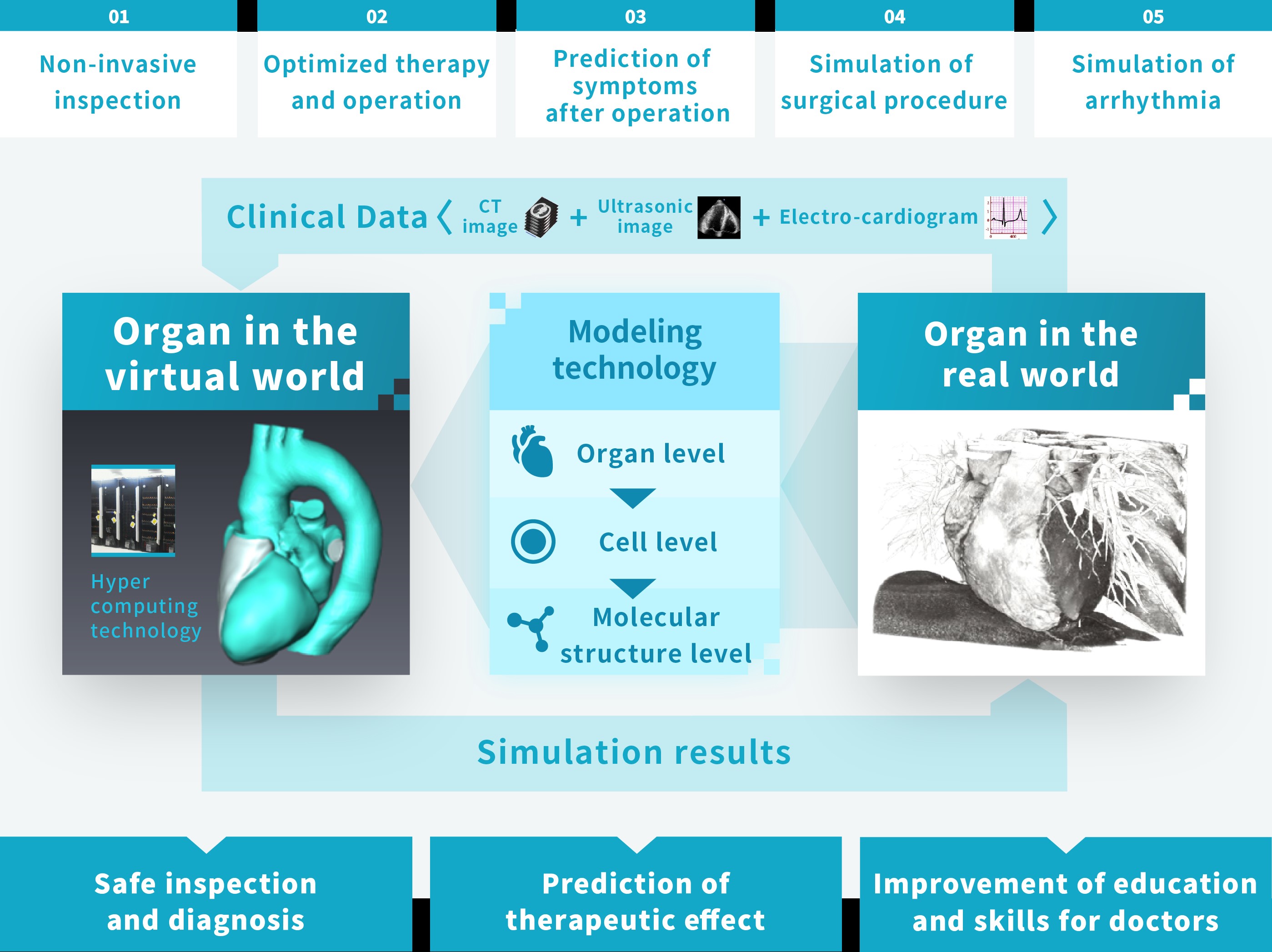
The University of Tokyo has been working for more than 20 years to reproduce an individual’s heart by supercomputer.
The heart simulator can respond to needs from medical fields rapidly as a practical modeling procedure utilizing the technology.
The heart simulator can reproduce an individual’s heart motion precisely by computing electrical and mechanical behavior at the molecular structure level utilizing clinical data such as images of CT and ultrasound as input data.
In addition to the heart movement, for example, the heart simulator can compute the energy consumption of each part of the heart. It can compute change of myocardium thickness, internal structure and blood flow precisely as well as the appearance.
The heart simulator can respond to needs from medical fields rapidly as a practical modeling procedure utilizing the technology.
This is the highest technology in the world utilizing the computing power of a supercomputer that enables the simulation.
This technology enables us to recognize medical information that is difficult for present medical devices to grasp in advance. And it also enables us to try various treatments on the heart reproduced in the virtual world.
As a result, doctors can provide a more rational diagnosis and propose less invasive therapy to patients.
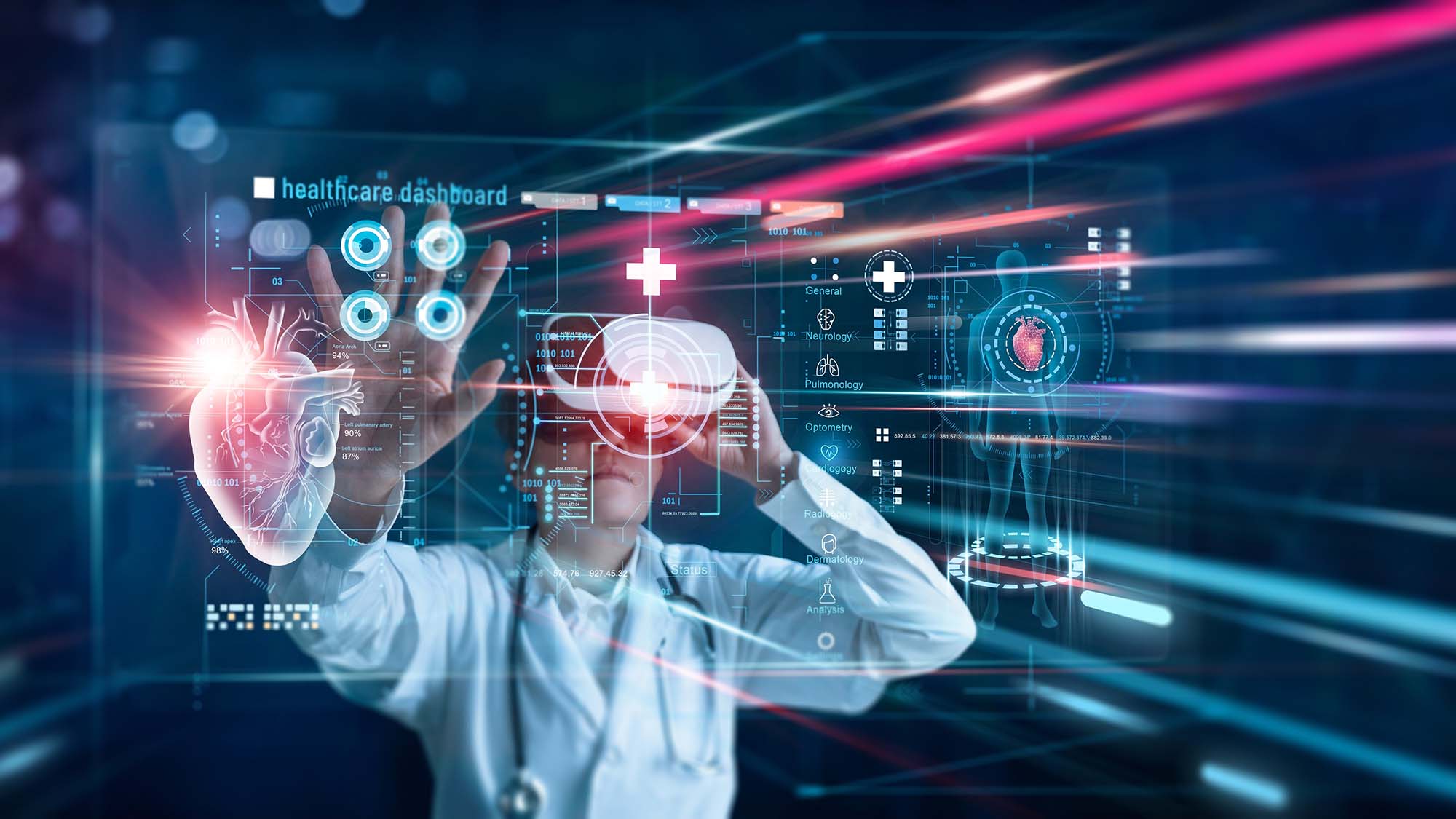
Prediction of therapeutic effect for cardiac resynchronization therapy
Prediction of therapeutic effect for cardiac resynchronization therapy
The University of Tsukuba Hospital and PIA Co.,Ltd. are jointly engaged in this theme.
We plan to obtain medical device approval within a few years and start business.
The number of patients who need cardiac resynchronization therapy (CRT) with biventricular pacing targeted by this theme are more than 5,000 (replacement with CRT-D+CRT-P new implantation) in Japan as of 2019, and more than 500,000 in USA based on 2002-2012 research.
Worldwide, the medical cost of CRT was expected to be 4.74 billion USD (appx.500 billion yen) in 2016, 9.2 billion USD (appx. 1 trillion yen).
We aim to eliminate non-effective invasive treatments as well as reduce enormous medical costs with this service.
In addition, we will be able to predict an individual patient who can expect to have a large CRT therapeutic effect among those who used to be considered as limited effect patients.
As a result, we can expect to provide a highly efficient medical service.
Issues to be solved by the service
- It is reported that 30% of patients cannot have a sufficient therapeutic effect by CRT
- In the present medical field, it is impossible to precisely predict which patients cannot receive therapeutic effect by CRT
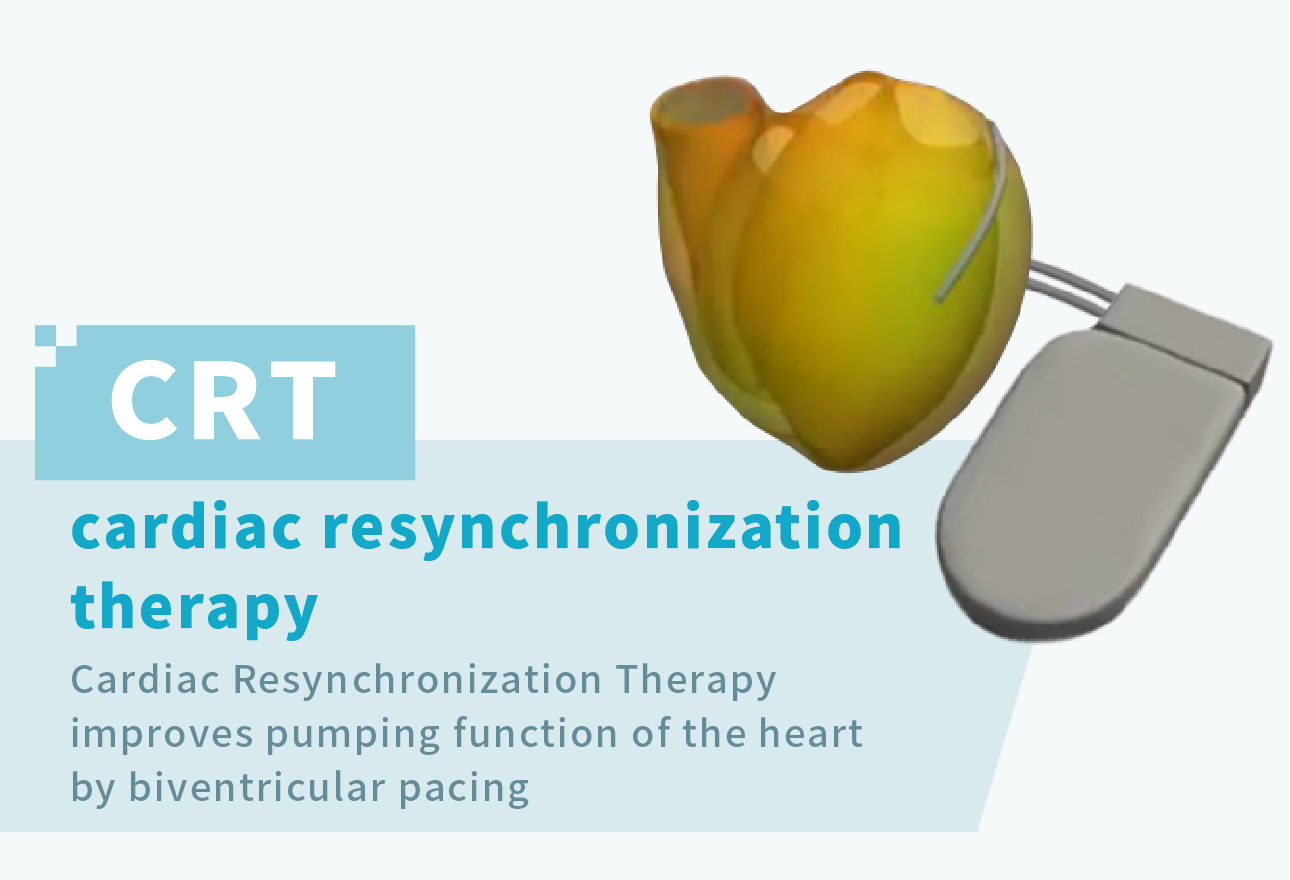
Service outline
- Prior to implantation of a CRT device, the simulation can show whether it will be effective or not for an individual patient, and in effective cases, where the electrodes are to be placed to achieve a better therapeutic effect.
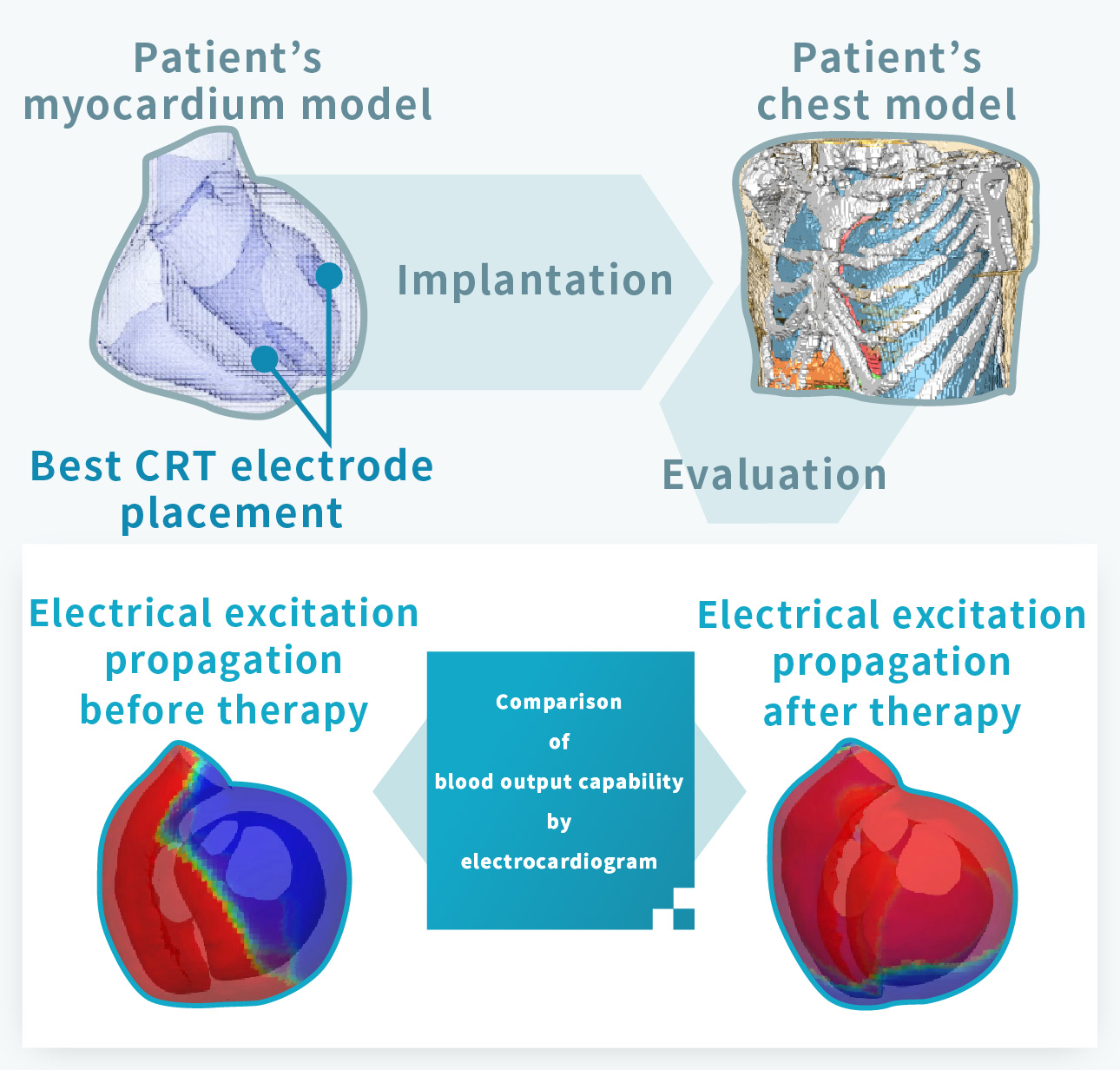
Decision of surgical procedure and prognosis prediction for congenital heart disease
Decision of surgical procedure and prognosis prediction for congenital heart disease
The National Cerebral and Cardiovascular Center, the University of Tokyo, UT-Heart Inc., Cross Effect Co., Ltd. and PIA Co.,Ltd. are jointly engaged in this theme.
In Japan, 1% of newborn babies are suffering from congenital heart disease. And it is said that including adults, there are about 600,000 patients.
We are engaging in clinical research urgently to demonstrate the effectiveness of the simulation. And we are aiming to provide the service for a self-pay care fee prior to medical expenses for health insurance adaptation. In this way, we would like to contribute to improving the quality of life of patients with congenital heart disease .
Issues to be solved by the service
- Even experienced doctors encounter decision-making difficulties because of the complex structure and blood movement in congenital heart disease cases.
- For example, when there are several possible surgical procedures for a patient, in many cases, it is difficult for a doctor to decide which procedure will give the least burden to the patient’s heart for their life based on the doctor’s experience.
- The more a surgical procedure makes a patient’s heart normal, the more the patient’s burden and operation risk increases. At present, there are few ways to judge at which level the surgical procedure should be performed.
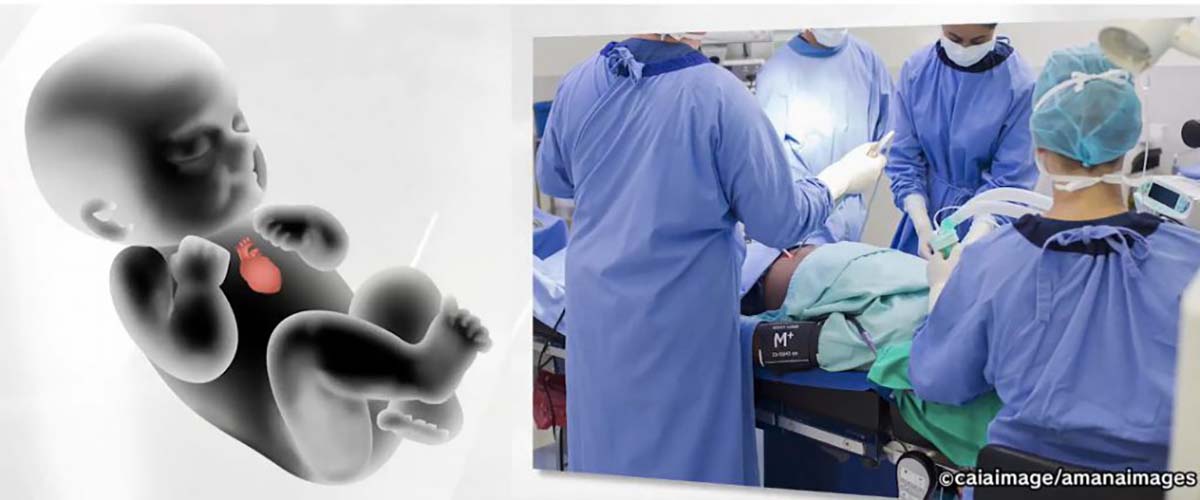
Service outline
- Support doctors to decide surgical procedures by predicting patient’s prognosis based on reproduced patient’s heart on the computer.
- Realize the world’s first operation support system consisting of computer heart simulation (function) and replica business (figure) that enables doctors to train in advance
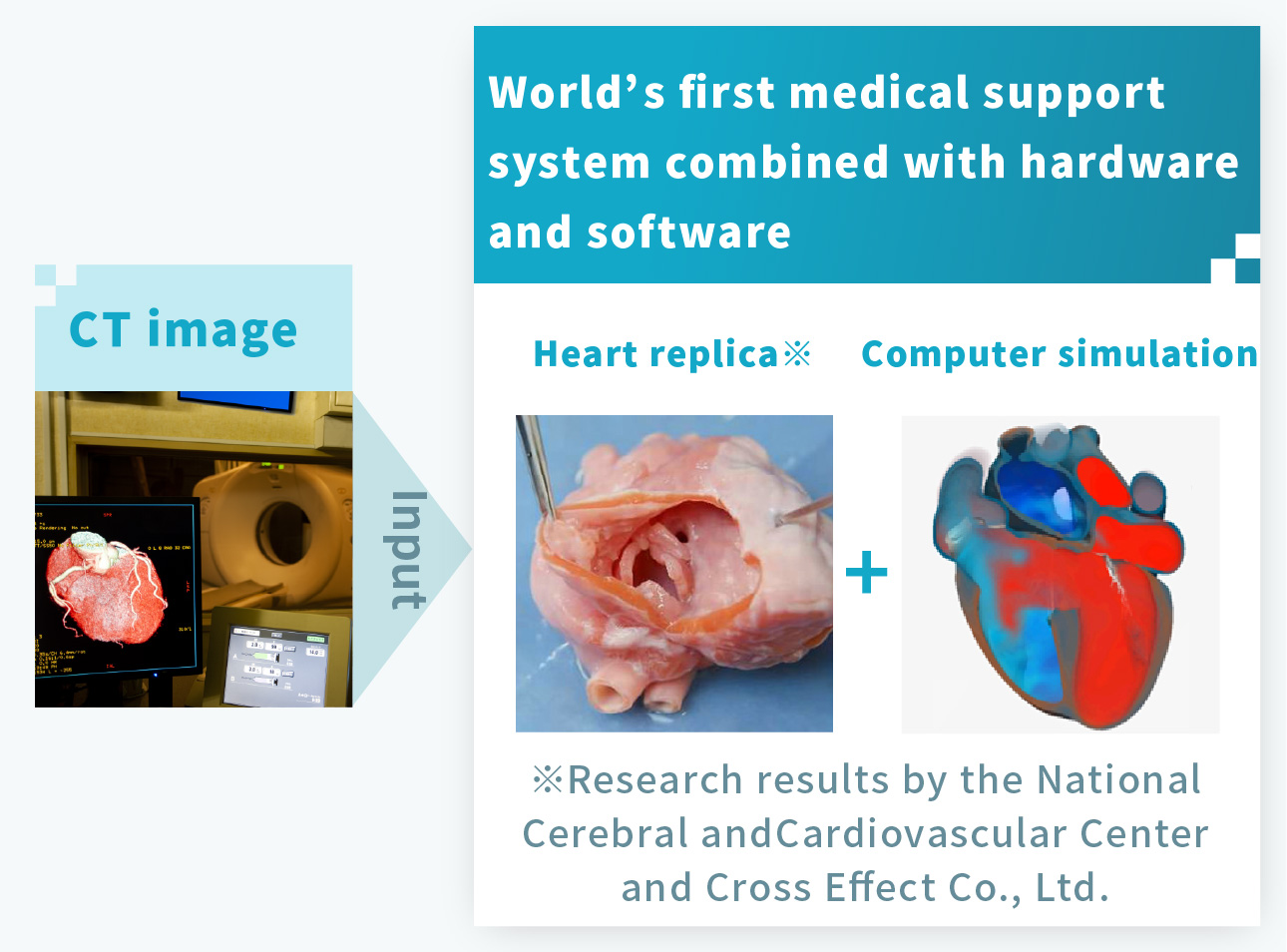
Cardiac screening leading to early detection of heart disease
Cardiac screening leading to early detection of heart disease
In this theme, we are working on the development of a new health screening service for early detection of heart disease based on the research results(*1) of the supercomputer Fugaku.
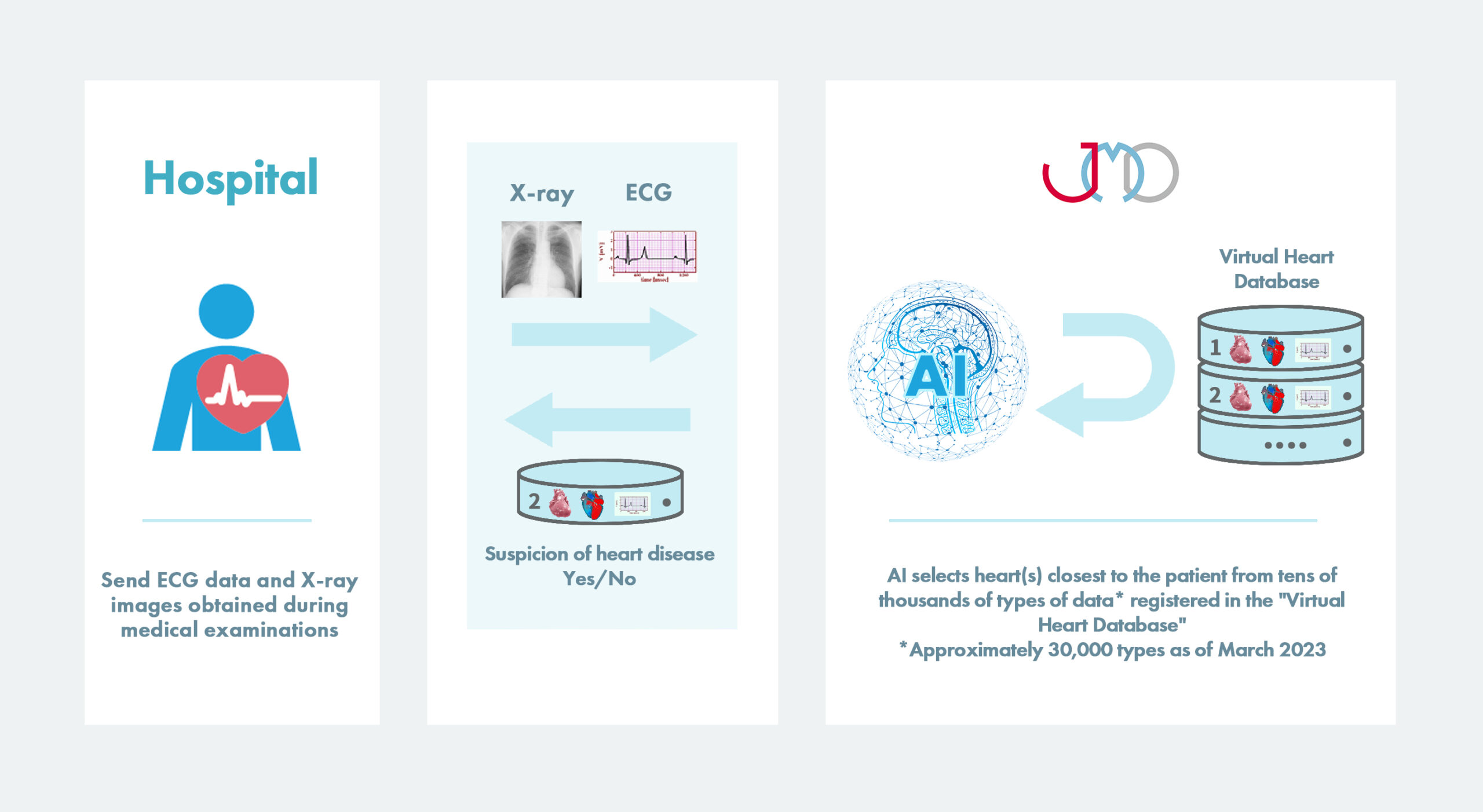
In recent years, the prevention and management of heart disease has become even more important. In fact, the number of heart failure patients nationwide is estimated to be about 1.2 million, and it is expected to reach 1.3 million by 2030.(*2) According to a WHO study, ischemic heart disease was the leading cause of death in 2019.(*3)
However, since there are few symptoms in the early stages of heart disease, it is difficult to detect it early before it progresses, and it is rare to get a doctor’s diagnosis until the disease has progressed.
Currently, health examinations primarily consist of non-invasive and hassle-free tests such as electrocardiography and X-ray examinations. We aim to realize a service that can detect heart disease at an early stage using this electrocardiogram data and X-ray image data.
*1 Ministry of Education, Culture, Sports, Science and Technology’s Fugaku Achievement Acceleration Program “Overcoming the Heart Failure Pandemic through Innovative Integration of Multiscale Cardiac Simulator and Large-Scale Clinical Data“. (Project No. hp220178)
*2 Japan Heart Foundation, Heart Failure in the Elderly Link
*3 WHO announces “Top 10 Causes of Death in the World“. Heart disease ranks first, with diabetes and dementia also ranking high. Prevention and improvement with diet and exercise Link

Service Offering Model
Service Offering Model
Our business is not the manufacture and sale of hardware like the traditional medical device business.
This is a service that provides data through the cloud with the results of computer simulations.
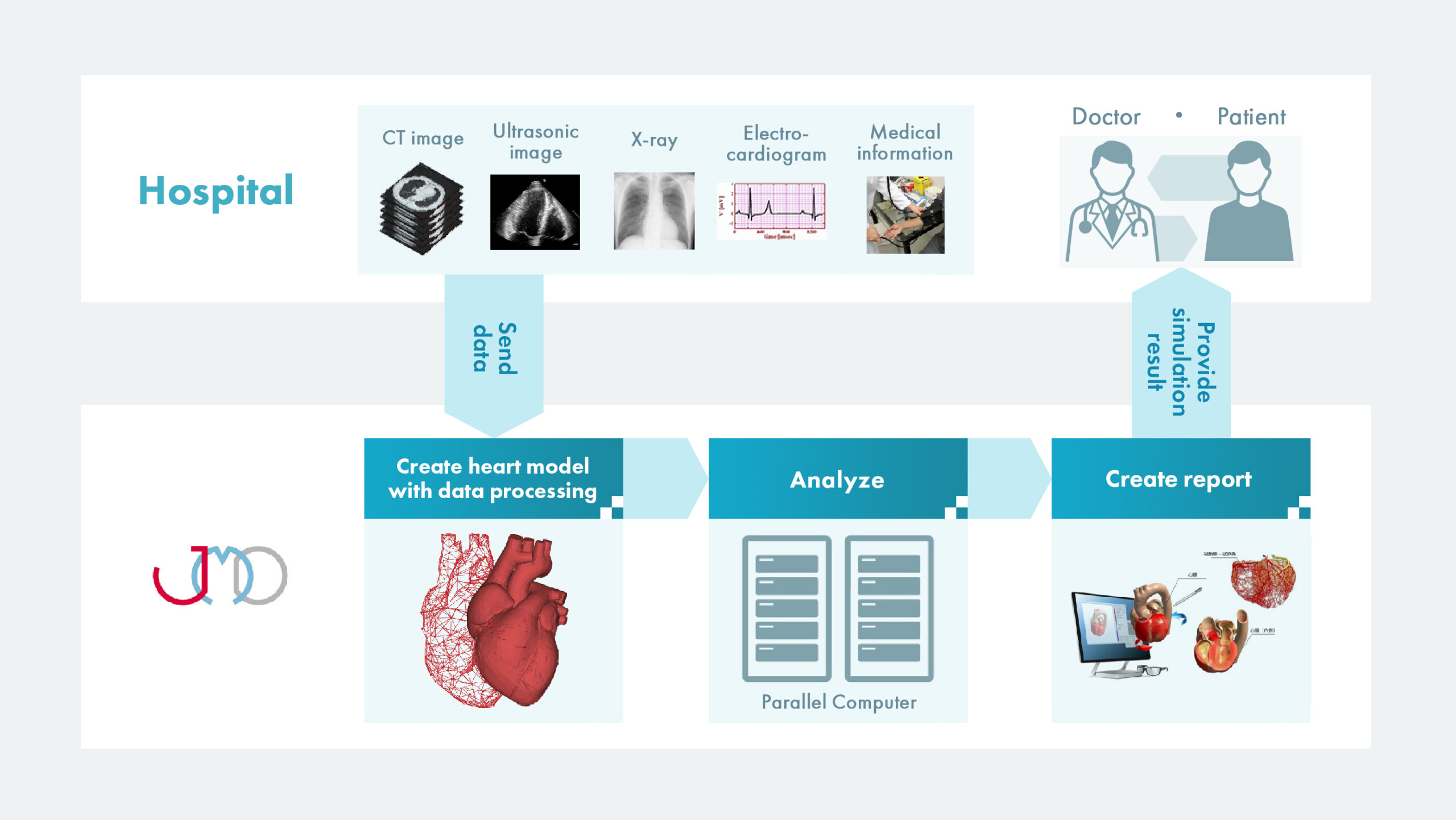
Roles
- The client hospital sends clinical data, including CT and ultrasonic images, to Japan Medical Device Corporation (JMD).
- JMD receives the data, processes the heart image data for simulation, run simulations, create reports, and provide them to the client hospital.
Service Coverage

01. Applicability judgement:Decide whether simulation service is applicable or not based on doctor’s diagnosis result
02. Simulation processing:With input of CT and ultrasonic and medical data, reproduce individual heart’s figure and movement, then predict therapeutic effect by simulation
03. Information offering:Provide doctor with information needed for tailor-made therapy based on reproduced heart
04. Diagnosis and therapy:Improve simulation service based on the results of doctor’s diagnosis and therapy
Outline of Simulation Processing
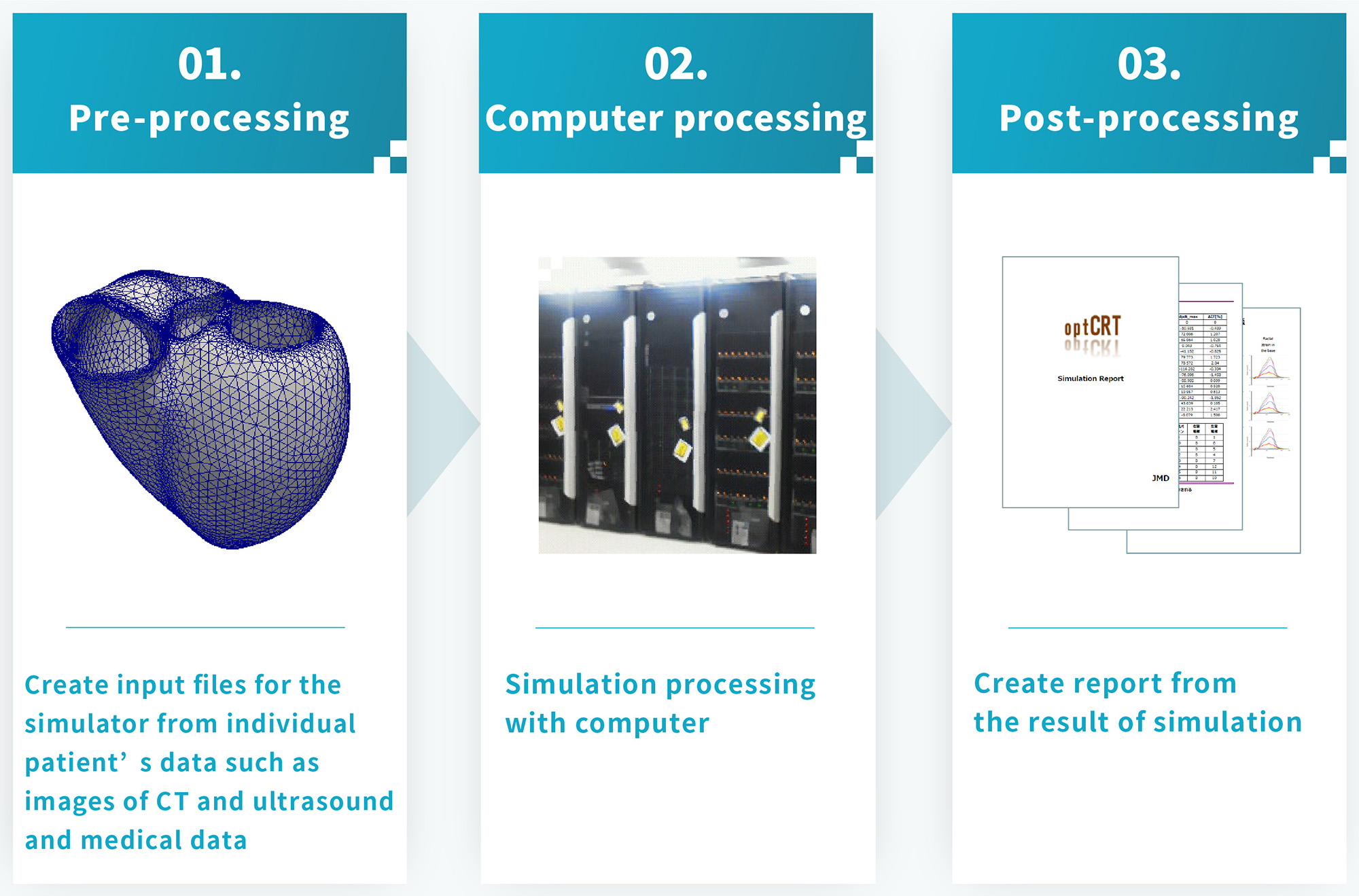
01. Pre-processing:Create input files for the simulator from individual Patient’s data such as images of CT and ultrasound and medical data
02. Simulation processing with Computer:Simulation processing with Computer
03. Post-processing:Create report from the result of simulation
Please contact us using this form. 〉
Please contact us
using this form. 〉
